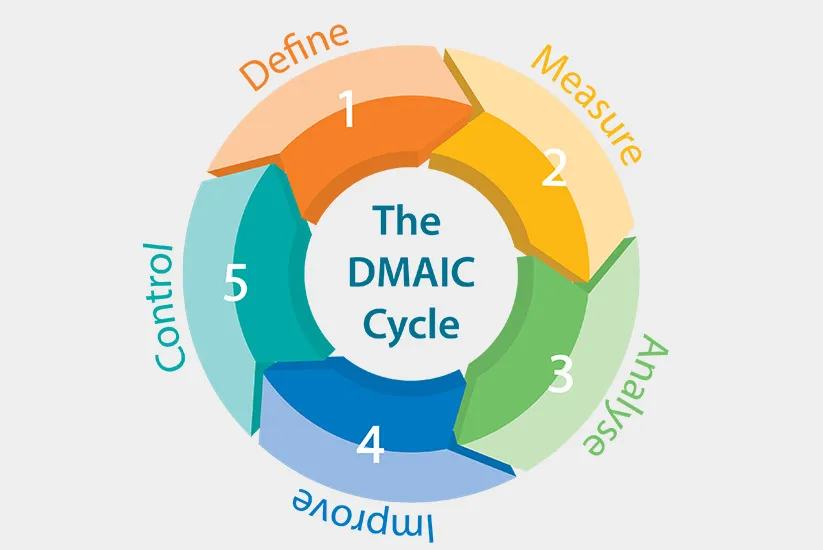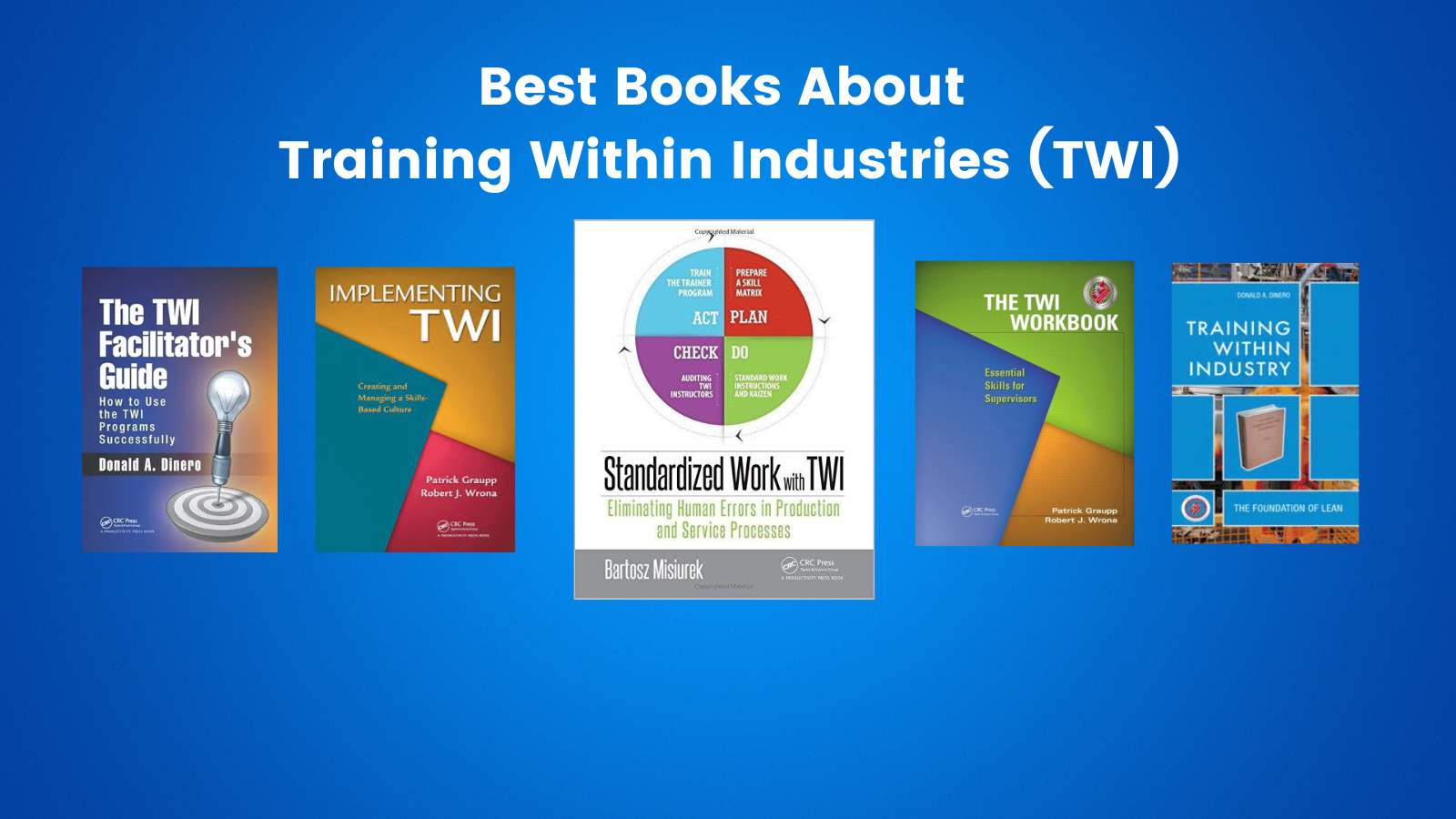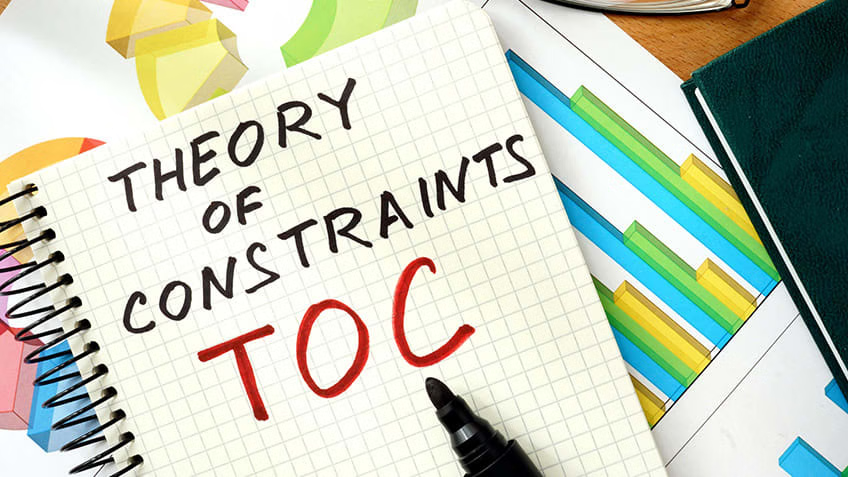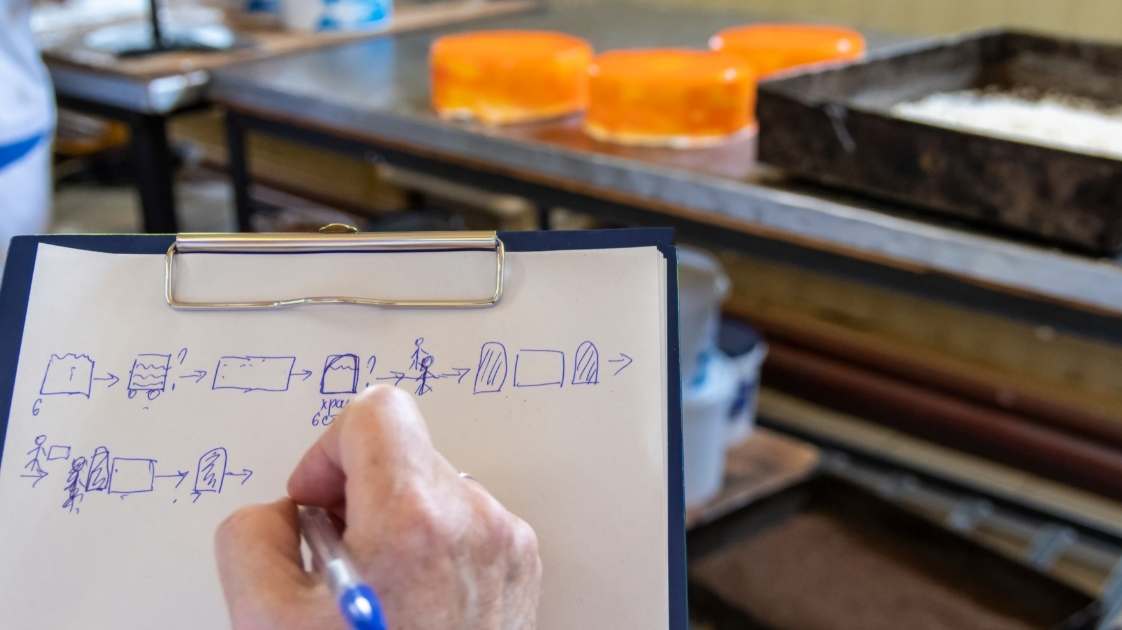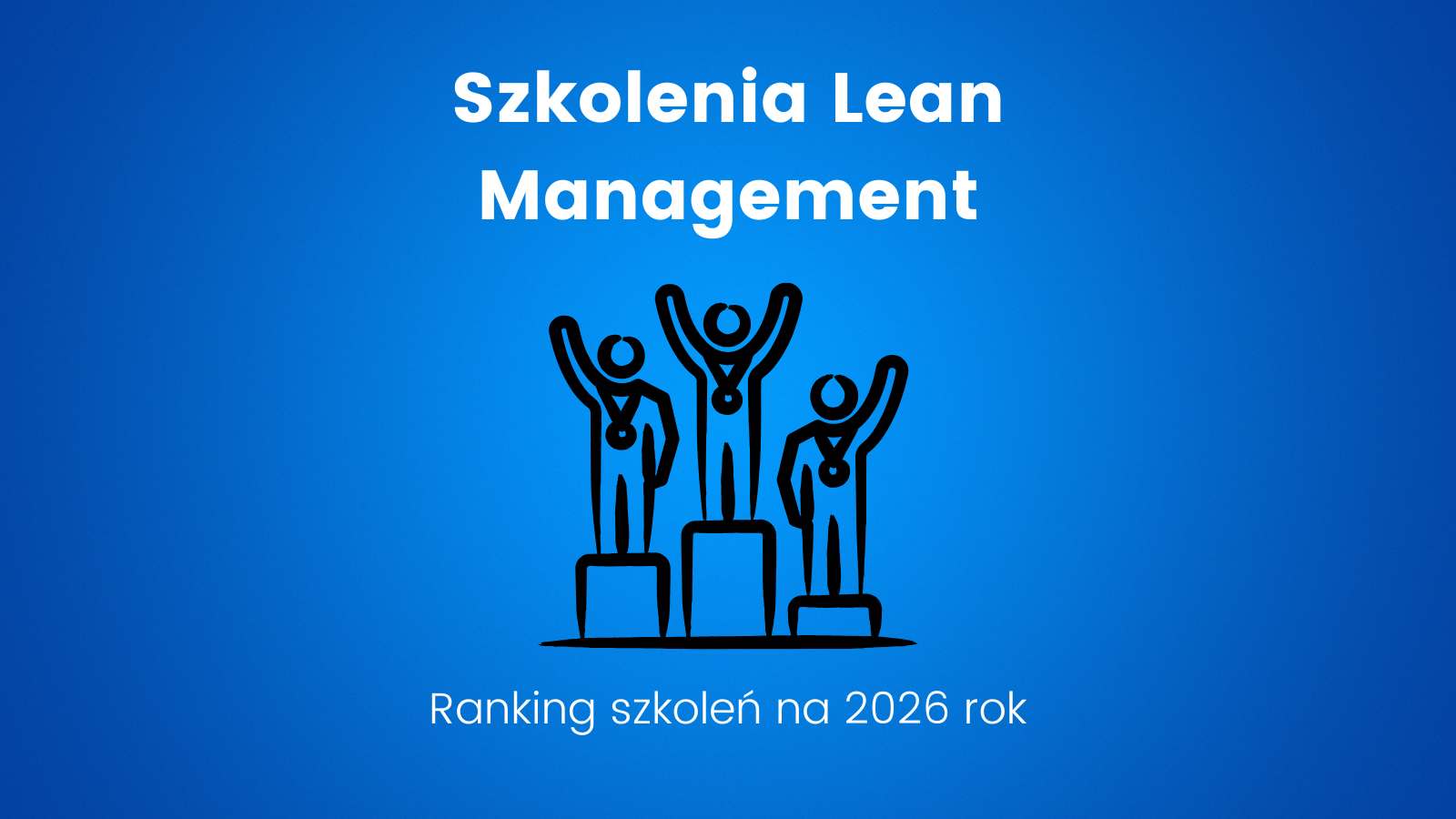DMAIC is a structured problem-solving methodology used in Six Sigma and Lean Management to improve existing business processes. The acronym stands for Define, Measure, Analyze, Improve, and Control.
The main goal of DMAIC is to reduce variation, eliminate defects, and enhance quality by using data-driven decision-making. It’s particularly effective for processes that already exist but require optimization or quality improvement.
Table of Contents
ToggleThe Five Phases of DMAIC Explained
Define Phase
In this initial stage, teams clearly define the problem statement, project scope, goals, and customer requirements. A project charter and SIPOC (Suppliers, Inputs, Process, Outputs, Customers) diagram are often created.
Measure Phase
The team collects relevant data and identifies key performance indicators (KPIs). Measurement tools ensure accurate baseline data for later comparison.
Analyze Phase
This phase focuses on identifying the root causes of process issues. Tools like the Fishbone Diagram, Pareto Analysis, and 5 Whys are used to reveal underlying problems.
Improve Phase
Solutions are designed and tested to address the root causes. This may include process redesign, automation, or staff training.
Control Phase
The new process is monitored to ensure that improvements are sustained over time. Control charts, audits, and standard operating procedures (SOPs) are established.
What is DMADV?
DMADV stands for Define, Measure, Analyze, Design, and Verify. It’s another Six Sigma methodology, but unlike DMAIC, it focuses on creating new processes or products that meet customer requirements from the ground up.
While DMAIC improves existing systems, DMADV designs new ones to achieve high performance and reliability.
The Five Phases of DMADV Explained
Define Phase
Establish project goals aligned with customer needs and business strategy.
Measure Phase
Identify critical-to-quality (CTQ) attributes and collect customer data to quantify requirements.
Analyze Phase
Examine possible process designs and select the one that best meets CTQ requirements.
Design Phase
Develop a detailed process or product design optimized for performance and quality.
Verify Phase
Test and validate the design to ensure it meets both business objectives and customer expectations before full deployment.
DMAIC vs DMADV – Key Differences
| Criteria | DMAIC | DMADV |
|---|---|---|
| Objective | Improve existing process | Design a new process or product |
| Focus | Process optimization | Process creation |
| End Goal | Reduce variation and defects | Meet or exceed customer requirements |
| Tools Used | Root cause analysis, control charts | Simulation, design optimization |
| Example | Reducing defects in production line | Designing a new customer onboarding process |
In short:
-
Use DMAIC when a process exists but underperforms.
-
Use DMADV when a new process must be created to meet quality goals.
Real-World Examples of DMAIC and DMADV
DMAIC Example: Improving Manufacturing Efficiency
A car manufacturer used the DMAIC methodology to reduce paint defects on its production line.
-
Define: Identify high defect rate in the paint process.
-
Measure: Collect data on defect types and frequencies.
-
Analyze: Determine that humidity levels cause variations.
-
Improve: Install humidity controls in the paint booth.
-
Control: Monitor humidity data and implement routine checks.
Result: Defects reduced by 40% in just three months.
DMADV Example: Designing a New Customer Support Process
A telecom company applied DMADV to design a new online support platform.
-
Define: Create a faster, automated system for customer service.
-
Measure: Gather customer feedback on response time expectations.
-
Analyze: Identify key features like live chat and ticket tracking.
-
Design: Build a web-based support interface.
-
Verify: Test with pilot users before full rollout.
Result: Customer satisfaction increased by 30% within the first quarter.
Benefits of DMAIC and DMADV in Six Sigma
Benefits of DMAIC
-
Focuses on measurable improvements in existing systems.
-
Uses statistical tools to validate progress.
-
Encourages continuous improvement culture.
Benefits of DMADV
-
Ensures new processes meet customer expectations.
-
Reduces the risk of future failures.
-
Ideal for innovation-driven industries (e.g., tech, product design).
Common Challenges and How to Overcome Them
Pitfalls in DMAIC Implementation
-
Lack of stakeholder engagement.
-
Insufficient data collection.
-
Poor project scoping.
Pitfalls in DMADV Projects
-
Misinterpreting customer needs.
-
Inadequate validation before rollout.
-
Overcomplicating process design.
How to Choose Between DMAIC and DMADV
Ask yourself:
-
Does the process already exist but needs improvement? → Use DMAIC.
-
Are you creating something new from scratch? → Choose DMADV.
For most organizations, both methods complement each other as part of a comprehensive Six Sigma strategy.
Conclusion: Continuous Improvement through Six Sigma
Whether improving existing systems with DMAIC or creating new ones through DMADV, both methods are essential tools for achieving operational excellence.
These structured approaches empower organizations to deliver consistent quality, reduce waste, and drive long-term growth.
Frequently Asked Questions (FAQ) – DMAIC and DMADV
1. What does DMAIC stand for?
DMAIC stands for Define, Measure, Analyze, Improve, and Control – the five phases of the Six Sigma improvement process.
2. What does DMADV stand for?
DMADV stands for Define, Measure, Analyze, Design, and Verify – used for creating new products or processes.
3. Is DMAIC part of Lean?
Yes. DMAIC complements Lean by focusing on reducing variation, while Lean focuses on eliminating waste.
4. Can DMAIC and DMADV be used together?
Absolutely. Many organizations use DMAIC to improve processes and DMADV when designing new ones.

Dr. Bartosz Misiurek is a co-founder of a few start-ups like Leantrix, Lean Community, Leancoin, etwi, Lean Global Consulting, Sallar. He is a CEO at LeanTrix Ltd., Leancoin Ltd, Do Lean IT OU, and a Member of the Board at Astral Hodling OU. Author of the book “Standardized Work with TWI: Eliminating Human Errors in Production and Service Processes.” He works as Sr Manager and TWI Global Coach at Automotive Company.
